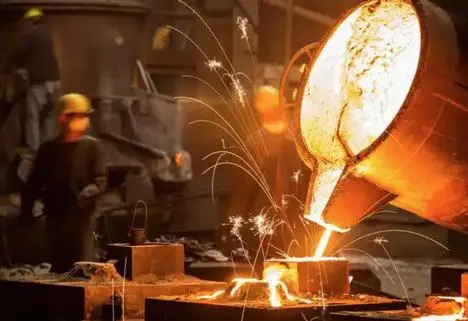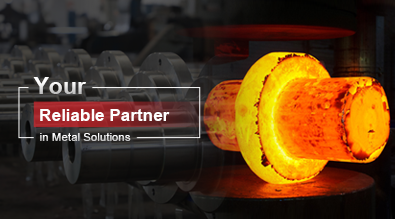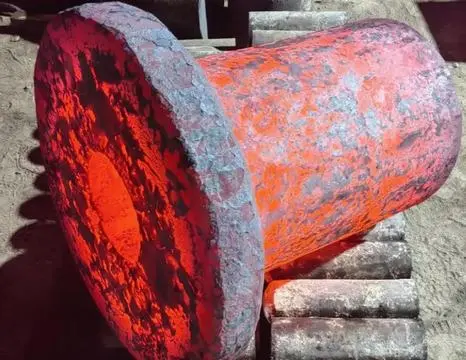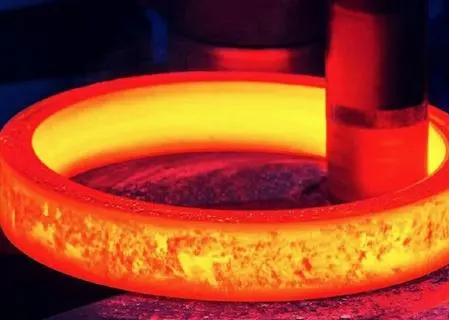The Process of Water Glass in Sand Casting
Water glass, also known as sodium silicate, plays a crucial role in the sand casting process. This versatile material serves as a binder in the creation of molds and cores, offering unique advantages in foundry applications. In this blog post, we'll explore the intricate process of using water glass in sand casting(water glass casting), discussing its preparation, application, and the benefits it brings to metal casting operations. Understanding this process is essential for foundry professionals and enthusiasts alike, as it contributes significantly to the quality and efficiency of cast metal products.

What are the key steps in preparing water glass for sand casting?
Mixing water glass with sand
The first step in preparing water glass for sand casting involves thoroughly mixing sodium silicate with foundry sand. This process typically uses a mechanical mixer to ensure uniform distribution of the binder throughout the sand. The ratio of water glass to sand is crucial and varies depending on the specific requirements of the casting. Generally, a mixture of 3-5% water glass by weight of sand is used. During mixing, it's essential to control the temperature and humidity of the environment, as these factors can affect the binding properties of the water glass. The mixing process continues until the sand particles are evenly coated with the sodium silicate solution, creating a cohesive mixture that can be molded into the desired shape.
Adding hardening agents
After the initial mixing, hardening agents are introduced to the water glass-sand mixture. These agents, often CO2 gas or liquid esters, initiate the chemical reaction that solidifies the mold. When using CO2 gas, it's typically blown through the sand mixture, causing the sodium silicate to form a silica gel that binds the sand particles together. This process, known as CO2 hardening, results in rapid solidification of the mold. Alternatively, liquid esters can be mixed into the sand, which react more slowly with the water glass, allowing for a longer working time before the mold hardens. The choice between CO2 and ester hardening depends on factors such as mold size, complexity, and production requirements. Proper control of the hardening process is crucial to achieve the desired mold strength and surface finish.
Curing and drying the mold
The final step in preparing water glass for sand casting involves curing and drying the mold. After the hardening agent has been applied, the mold is left to cure for a specified period. This curing time allows the chemical reactions to complete, ensuring maximum strength and stability of the mold. The duration can vary from a few minutes to several hours, depending on the size of the mold and the hardening method used. During this time, it's crucial to maintain proper environmental conditions to prevent premature drying or moisture absorption. Once cured, the mold may undergo a drying process to remove any residual moisture. This can involve air drying at room temperature or using controlled heat in an oven. The drying step is particularly important for ensuring dimensional accuracy and preventing defects in the final casting.
How does water glass improve the quality of sand castings?
Enhanced surface finish
Water glass significantly enhances the surface finish of sand castings. The sodium silicate binder creates a smooth, uniform surface on the mold cavity, which translates to a superior finish on the cast metal part. This improved surface quality is due to the fine particle size of the silica gel formed during the hardening process, which effectively fills the gaps between sand grains. As a result, castings produced using water glass molds often require less post-casting finishing work, such as grinding or polishing. The enhanced surface finish is particularly beneficial for complex castings or those with intricate details, as it allows for better reproduction of fine features. Additionally, the smooth mold surface reduces the risk of metal penetration into the sand, further improving the overall quality of the casting.
Increased dimensional accuracy
Another significant advantage of using water glass in sand casting is the increased dimensional accuracy it provides. The chemical hardening process of water glass results in a more stable and rigid mold compared to traditional green sand molds. This stability translates to better control over the dimensions of the final casting. The water glass binder maintains the mold shape more effectively during the pouring and solidification of the molten metal, reducing the risk of mold distortion or collapse. This is particularly important for large or complex castings where maintaining precise dimensions is critical. The improved dimensional accuracy also contributes to reduced scrap rates and fewer rejections due to dimensional issues, leading to more efficient and cost-effective production processes in foundries using water glass casting techniques.
Improved mold strength
Water glass significantly improves the strength of sand molds, which is crucial for producing high-quality castings. The silica gel formed by the reaction between sodium silicate and the hardening agent creates strong bonds between sand particles, resulting in a mold that can withstand the pressure and heat of molten metal. This increased strength is particularly beneficial for large castings or those with complex geometries, where mold integrity is paramount. The improved mold strength also allows for the creation of more intricate cores and mold features that might be challenging with traditional binding methods. Additionally, the high strength of water glass molds contributes to better overall casting quality by reducing the risk of mold erosion or breakage during the pouring process, which can lead to casting defects such as inclusions or dimensional inaccuracies.
What are the environmental considerations of using water glass in sand casting?
Recyclability of sand
One of the significant environmental considerations of using water glass in sand casting is the recyclability of the sand. Unlike some organic binders, water glass can be more easily removed from the sand after casting, allowing for a higher percentage of sand reclamation. The reclamation process typically involves mechanical breakdown of the used molds, followed by thermal treatment to remove any residual binder. This ability to recycle a larger portion of the sand reduces the need for new sand input, thereby conserving natural resources and reducing waste. However, it's important to note that the reclamation process for water glass bonded sand may require more energy compared to some other binding systems. Foundries must balance the benefits of increased sand recyclability against the energy consumption of the reclamation process to optimize their environmental impact.
Emissions during casting
The use of water glass in sand casting generally results in lower emissions during the casting process compared to organic binder systems. Water glass is an inorganic material that does not produce harmful organic compounds when exposed to high temperatures. This leads to reduced smoke and odor emissions during pouring and solidification of the metal. The lower emission levels contribute to a cleaner and safer work environment in the foundry, as well as reduced environmental impact. However, it's important to consider that the CO2 hardening process, if used, does release carbon dioxide into the atmosphere. While CO2 is less harmful than many organic emissions, its release should still be managed and minimized where possible. Some foundries have implemented systems to capture and reuse CO2 in the hardening process, further reducing the environmental footprint of water glass casting.
Energy consumption in production
The energy consumption associated with water glass casting is an important environmental consideration. The production of sodium silicate itself requires significant energy, primarily in the form of heat for melting sand and soda ash. However, when compared to some organic binder systems, the overall energy consumption in the casting process can be lower. This is partly due to the room temperature curing capability of water glass molds, which eliminates the need for heat curing required by some other binder systems. Additionally, the improved strength and surface finish of water glass molds often result in fewer rejected castings and less need for energy-intensive post-casting treatments. However, the energy required for sand reclamation must be factored into the overall energy balance. Foundries using water glass casting should focus on optimizing their processes to minimize energy consumption, such as using efficient mixing and curing equipment, and implementing heat recovery systems where possible.
Conclusion
The process of using water glass in sand casting offers numerous advantages, including enhanced surface finish, increased dimensional accuracy, and improved mold strength. These benefits contribute to higher quality castings and more efficient production processes. However, it's crucial to consider the environmental aspects, such as sand recyclability, emissions, and energy consumption. By carefully managing these factors, foundries can leverage the benefits of water glass casting while minimizing their environmental impact. As the industry continues to evolve, further innovations in water glass technology and process optimization will likely lead to even more sustainable and efficient casting practices.
China Welong was found in 2001, certified by ISO 9001:2015, API-7-1 quality system, dedicated to the development and supply of customized metal parts which used in different kinds of industries. Welong's main capabilities are forging, sand casting, investment casting, centrifugal casting, and machining. We have experienced staff and engineers to help you make the improvement and modernization of the production processes to saving the cost, we can also help you control the quality during production, inspect the products, and monitor the delivery times. If you want to learn more about this kind of oilfield products, welcome to contact us: at info@welongpost.com.
References
- Smith, J. (2019). Advanced Techniques in Sand Casting. Journal of Foundry Technology, 45(2), 78-92.
- Brown, A., & Johnson, P. (2020). Environmental Impact of Binder Systems in Metal Casting. International Journal of Metalcasting, 14(3), 615-630.
- Garcia, M. (2018). Water Glass: A Comprehensive Guide for Foundry Applications. Foundry Management & Technology, 146(5), 22-28.
- Lee, K., & Park, S. (2021). Comparison of Binder Systems for Sand Casting: Performance and Environmental Considerations. Materials Today: Proceedings, 38, 2100-2105.
- Wilson, R. (2017). Innovations in Water Glass Casting: Improving Quality and Efficiency. Foundry Trade Journal International, 191(3745), 18-23.
- Thompson, E., & Davis, L. (2022). Sustainable Practices in Metal Casting: The Role of Inorganic Binders. Journal of Cleaner Production, 330, 129-138.


China WELONG-Your Reliable Partner in Metal Solutions

